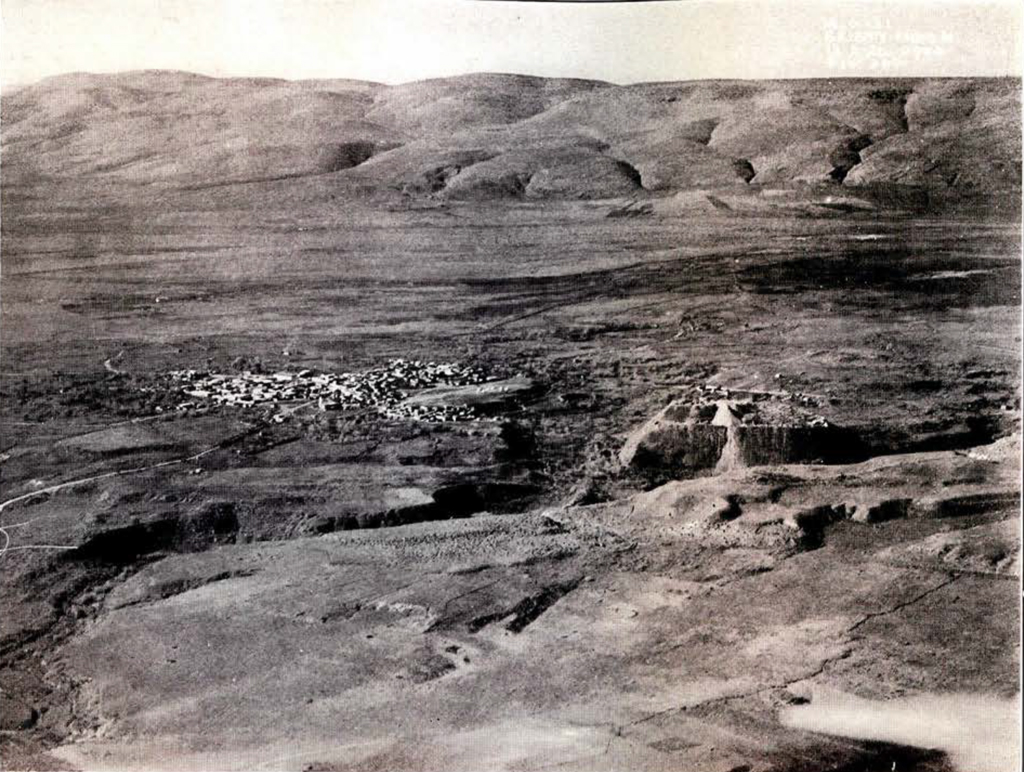NOTE.—The services to archaeology rendered by the Royal Air Force in the Middle East were briefly referred to in the last number of the JOURNAL in connection with the Joint Expedition to Ur in Mesopotamia where photographs of the ruins were made from the air. Similar fine work was done by another squadron of the same organization in Palestine where photographs were made from the air showing the present stage of the excavations conducted by our Expedition to Beisan, described in the last JOURNAL. The Beisan Expedition is indebted to the General Officer Commanding in Palestine and the squadron under his Command for the prompt response that was given to a request from the Expedition for cooperation. Photographs were made from an airplane at different heights showing the excavations and the entire site together with the surrounding country. By this generous cooperation the R. A. F. has made a contribution to modern methods in archaeology that calls for recognition. It has been a highly intelligent cooperation, freely and cheerfully rendered. The air photographs placed at our disposal are part of the permanent records of the Expedition. We can do no less than acknowledge the fine spirit of helpfulness that our scientific Expeditions to the Middle East have met with on the part of the Royal Air Force. The squadrons in Egypt, Palestine and Iraq have placed Archaeology under deep obligations to them. Three of the photographs of Beisan are published here with notes by Dr. Fisher.
EDITOR.
After the close of the Museum’s Expedition at Beisan for the season of 1923, aerial photographs of the excavations were taken by the XIVth Squadron of the Royal Air Force stationed in Palestine. Through the courtesy of the Commander, three of these are reproduced herewith.

The first is a view of Tel el Husn, the Citadel of Beisan, which has thus far been the scene of the Expedition’s major work. This is taken from the east looking nearly due west. The main hill looms up in the foreground and one obtains a much better idea of its magnitude and symmetrical shape than appears in any ordinary photograph. The relation of the east and north terraces to the summit are clearly discernable. At the foot of the hill on the right is the River Jalud, whose winding course can be traced across the Plain of Jezreel in the background. On the extreme left is a portion of the modern village of Beisan. The main road and several bypaths cross the Jalud on a rebuilt stone arch near the upper right hand corner of the picture, while just above are the buildings of the headquarters of the Expedition.

The second view is one looking down on the excavations from the north and shows the extent of the work thus far accomplished and the present aspect of the summit where we have reached the eighth level or building period. Along the east, north and west sides, on the terraces, the buildings visible belong to the later Arabic and Byzantine periods, while on the summit nearly all the walls are either Scythian or Egyptian, with a few of the heavier foundation walls of the Roman temple and the later basilica which have not yet been removed. Extending out from the east side of the summit is the large earth embankment which had been made for the light railway line which carries off the debris from the main excavations to the eastern edge of the hill. As the work progresses and the lower strata are reached the level of the railway line will be lowered until the hill has been completely excavated when the ruins will be left completely bare and unencumbered.

Image Number: 30058
The third photograph was taken from a point much farther to the east and at a higher altitude than the first. It gives a survey of the whole stretch of country between the slopes of Mount Gilboa in the background and the River Jalud. This great area which once was famous for its fertility and richness, is now mostly occupied by pestilential swamps, which are gradually being drained by the Government. The isolated position of the ancient mound, which gave it its great value as a stronghold, is well shown in this picture. In the immediate foreground is the edge of the plateau, that falls in a steep declivity to the Jalud that cuts across the picture from right to left. On the other side of the Jalud near the right of the picture is seen the hill or citadel of Bethshean or as it is called Tel-el-Husn (The Hill of the Fortress). A little farther away beyond the Jalud is the modern town of Beisan. The Jalud itself is hidden in the deep gorge in the middle foreground. We are looking directly west. Behind us at a distance of three miles lies the Jordan.

